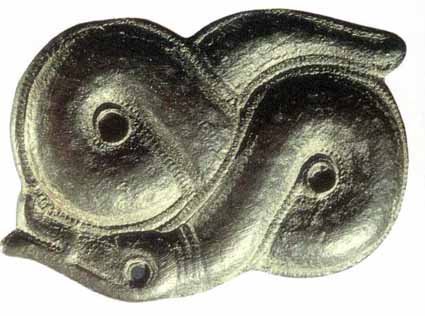Midgard Serpent
The World Serpent. The Midgard Serpent, called Jörmungand (Jormungand) or Jörmungandr, was an offspring of Loki and the giantess Angerboda. Jörmungand symbolised evil.
Not only could Jörmungand kill its victim by crushing constriction, the Midgard Serpent's venom was lethal even against the gods. Jörmungand was Thor's most deadly enemy.
To confine the ever-growing serpent, Odin had Jörmungand thrown into the sea. But, Jörmungand grew so large that his entire body completely encircled the world. See Monsters Bound in Ragnarök.
Thor failed to kill Jörmungand the first time the two met. Thor hooked Jörmungand like a fish. The thunder-god tried to smash Jörmungand's head in with the Mjollnir, Thor's magic hammer. But the frightened frost-giant Hymir cut off Thor's line, allowing the Midgard Serpent to escape. See Fishing Expedition in Of Thor and Giants.
At Ragnarök (Ragnarok), Jörmungand escaped his underwater confinement. Thor managed to kill the evil serpent with Mjollnir, but he succumbed to the deadly venom from Jörmungand.
Related Information
Name
Midgard Serpent – "World Serpent"
Jörmungand, Jormungand, Jörmungandr, Jormungandr.
Related Articles
By Jimmy Joe







